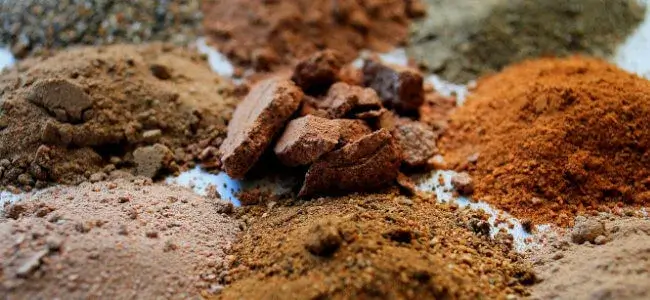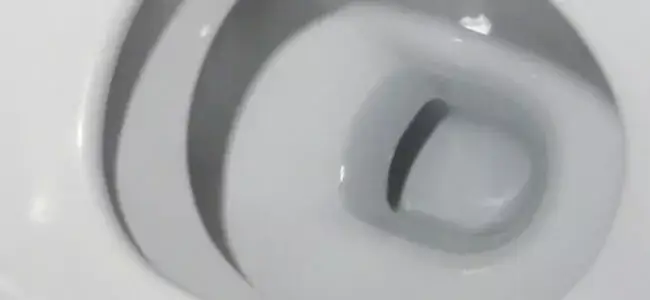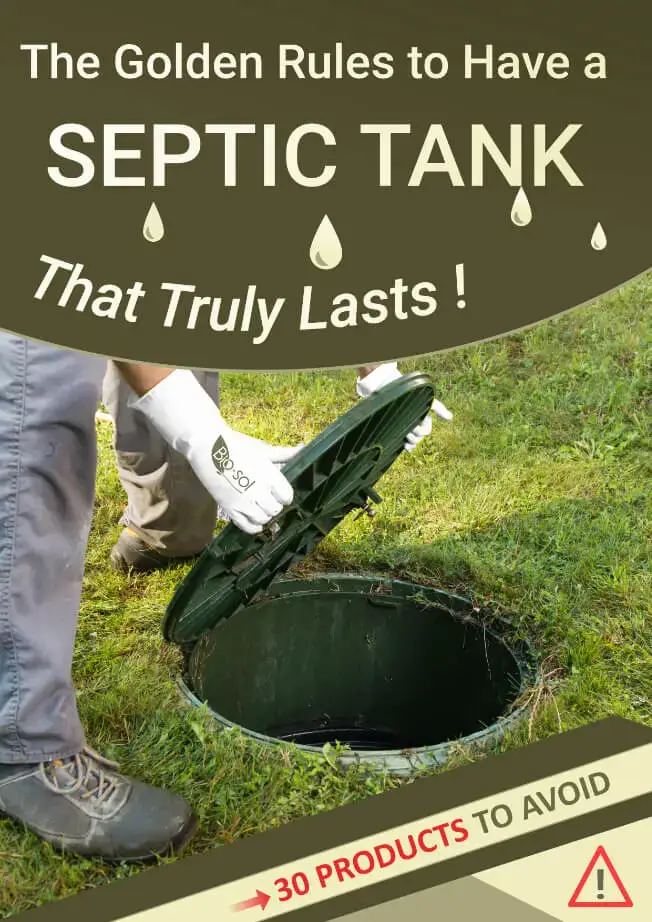What are the options of advanced septic systems?

TABLE OF CONTENTS
When making a purchase decision for any gadget, you will most likely be faced with all manner of options that can help you to customize the device for your convenience. The same can be said of septic systems, except that in some scenarios, these add-ons are a must-have depending on the region. An advanced septic system allows for additional treatment of the wastewater and it can come in handy when the nature of the water or the sensitivity of the environment requires more treatment than what the conventional septic system can provide. Advanced septic systems can help to substantially lower the biological oxygen demand (BOD) as well as the total suspended solids (TSS). In addition, advanced systems will also remove pathogens and some nutrients before the water seeps into the soil.
There are two broad categories of advanced septic systems;
- Media filters
- Aerobic/Advanced treatment units (ATUs)
Aerobic/Advanced treatment units (ATUs)
The ATU is arguably the most commonly implemented advanced septic system and it primarily uses oxygen for the advanced treatment of wastewater. By adding oxygen, ATUs break down the organic matter and thereby reduce the nutrient loading and pathogens. While conventional septic systems are anaerobic (meaning they break organic waste in the absence of oxygen), the ATUs rely on oxygen to foster the growth of aerobic bacteria and these bacteria break down the suspended solids in the wastewater. ATUs break down organic waste more efficiently than conventional septic systems and this is why they are often recommended in areas that require quicker decomposition of organic solids or a more accurate elimination of pathogens in wastewater.
Choosing an ATU
When choosing an ATU, you need to consider the mode of operation. ATUs have three different ways of treating wastewater;
Suspended growth systems
Suspended growth systems usually have a compartment called an aeration chamber where the air is mixed with the wastewater. Most units are usually installed underground and this means that the air has to be blown into the chamber by a compressor or air blower. Suspended growth systems do not have a media for attachment of the bacterial because they rely on the bacteria that are suspended in the wastewater. They also have a second compartment which is used in the settlement of solids. These two compartments are linked which makes it possible for settled bacteria in the settlement chamber to be brought back into the treatment chamber.
Fixed film systems
The fixed-film system makes use of a porous surface which provides a medium that supports the biomass film that helps in the digestion of organic matter in the wastewater. The film can be made from fabric, Styrofoam, gravel, plastic or any other suitable porous material. There are all kinds of designs of fixed-film systems on the market but they can all be categorized into two broad categories. The first category is the systems that have a media that moves relative to the wastewater which allows it to alternate between immersion in water and exposure to air. The second kind uses a stationary media but varies the wastewater flow to allow the film to alternate between exposure to air and immersion in wastewater. The common denominator in both types is that the biomass needs to be exposed to both air and wastewater for aerobic digestion to happen.
Sequencing batch reactor
The sequencing batch reactor systems have an anaerobic decomposition, settling as well as settling and return phases all in the same chamber. This is made possible through the air that is bubbled through the wastewater during the process of decomposition. Once the air has been bubbled through, the bubbler is shut off to allow the wastewater to go though a settling cycle. After a while, the bubbler is turned back on and the system goes back to a decomposition cycle as the settled bacteria mixes into the aerobic environment. Even though these systems are not very commonly used, they can help to greatly reduce the space used by the septic system.
Media filters for advanced septic systems
All sorts of media can be used for filtration of wastewater before releasing it into the soil. Textile, crushed glass, peat moss, and even coconut husks can be used as filtering materials. Some systems are designed to allow the wastewater to filter through the media while others allow the effluent to trickle over porous material. Here are some of the most commonly used media filters.
Sand
The effluent from the tank typically flows into a pump where it is evenly applied over the sand surface. A timer is implemented to ensure the entire surface is dosed intermittently. The idea is to draw oxygen from the atmosphere through the sand medium and the microbial community on the medium. The effluent is then treated through a combination of chemical, physical and biological processes. The enhanced contact and sedimentation help to remove the suspended solids through mechanical straining while the bacterial colony in the sand grains treats the wastewater.
Peat
Peat (a semi-decomposed organic material that has a large surface area and chemical properties that are ideal for the treatment of wastewater) is another commonly used filter material. In such systems, effluent from the septic tanks is added via gravity or by use of a pump into a peat filter. The peat works like a sponge to filter the wastewater.
Recirculating media filter (RMF)
A recirculating media filter pretreats the effluent from the septic tank by filtering it in a medium of coarse gravel, textile, or peat before it is sent into the soil treatment system. An RMF is ideal in areas that nitrogen contamination is a problem. As effluent moves through the filters, it becomes oxygenated and ammonia is converted into nitrates thereby releasing nitrogen back into the atmosphere. This process is called denitrification and it takes place in the RMF because of the anoxic conditions. An anoxic condition is where there is a low concentration of dissolved oxygen.
Nitrogen removal
Nitrogen removal treatment systems typically work through a sequential process of mimicking the natural nitrification process through engineered systems. In the first step, aerobic processes are employed to transform organic nitrogen and ammonia products in the effluent from the septic tank into nitrites and nitrates. This is therefore referred to as the nitrification stage. In the second step, the processes change from aerobic to anaerobic. When the nitrites and nitrates are put in an environment that has no oxygen but has a carbon source, the oxygen molecules are stripped of them and that leaves harmless nitrogen gas.
Pathogen removal using UV filter
Ultraviolet radiation can also be used to remove harmful pathogens in the wastewater from the septic tank. Radiation from UV rays penetrates the cell wall of the organisms and this either prevents the replication of the cells or it causes its death. For UV radiation to be effective, the water needs to be free of turbidity. The UV light has a somewhat limited distance for it to be effective and so most of the disinfection will happen when a thin film of water is exposed to the treatment.
Phosphorus removal
The main concern with phosphorus in septic systems is that its concentration in wastewater is hundreds of times higher than what is required for the stimulation of algal growth in surface water. In most systems, phosphorus is retained by the soil below the leach field and since it is not very mobile, it doesn’t spread into the streams or other water bodies. Some of the phosphorus is usually removed in the septic tank. Studies estimate that close to 30% of the phosphorus in the wastewater will remain in the sludge.
Since most of the phosphorus comes from blackwater, removal of blackwater from the wastewater stream can help to significantly reduce the phosphorus that is discharged. This can be achieved by implementing the composting toilet. A composting toilet is designed to collect the waste from the toilet in a chamber under the toilet. The waste is then broken down by bacteria into a humus-like material which is then removed periodically.
Urine-diverting toilets can also be used to remove urine from the wastewater. Such toilets typically have a barrier in their bowl which separates urine from solid waste. The urine is deposited in the front chamber while the fecal waste and tissue paper is sent into the rear chamber. The urine could be processed for use as a liquid or solid fertilizer. Urine contains almost 2 thirds of phosphorus in wastewater so these types of toilets can eliminate anything from 35-50% of the phosphorus. However, the effectiveness of these toilets largely depends on the correct usage of the toilet by the users.
Compositing toilets and urine-diverting toilets are more common in Europe but they are almost never used in the US and Canada. Instead, advanced systems are used for phosphate removal. The commonest technique that is employed by advanced systems in phosphate removal is the use of reactive media filters. Reactive media filters are modular units that are installed between the septic tank and the drain field. The media that are added in this section are meant to react with and immobilize phosphorus. These media typically contain aluminum, iron, or calcium compounds. The reactions are somewhat similar to precipitation and adsorption which occur in the soil. However, the media filters create an environment where the reactions can happen in an enhanced and controlled environment.
The media used in reactive media filters can be categorized as natural, manufactured or industrial by-product. Natural media include peat and iron-rich soils which can be supplemented with some other materials for maximum efficiency. Limestone, bauxite, lignocellulose fibers and bentonite can also be used. Manufacture materials include light-weight clay aggregates. These aggregates are typically processed to expand the structure of the clay in order to provide a greater surface area. Industrial by-products than can be used as media include blast furnace or steel furnace slags, alkaline ash from coal plants, etc.
Choosing an advanced septic system – the options
So how can you choose the best advanced septic system for your home or business? With so many options out there, you can easily get confused. But don’t you worry- we have rounded up some of the best options on the market to make your decision easier.
Premier Tech Aqua
Ecoflo, a product of Premier Tech Aqua, is an advanced septic system ideal for situations where space is an issue. It takes up 70% less space the conventional septic system would. This system doesn’t need any electro-mechanical devices for the treatment. The wastewater is distributed mechanically and this allows it to flow equally in the tank. It, therefore, helps to ensure a friendlier wastewater treatment process that is durable without impacting negatively on the environment.
The Ecoflo Coco filter uses coconut husk fragments as filtering media. The media is not only 100% renewable but it can also be converted into natural compost after it has served its purpose and this makes it one of the most environmentally-friendly options on the market. The Ecoflo Bi-Layer uses a layer of peat and a layer of coconut husk fragments as the media. The media in the Ecoflo Bi-Layer is also renewable. The main demerit is that you will have to replace the media (husks and peat) from time to time.
Bionest
Bionest is an advanced septic system that would do well in almost any kind of soil condition. For this reason, you can install it if your soil doesn’t meet the minimum requirements needed for the installation of conventional systems, e.g. if it doesn’t have the recommended percolation rate. This system is powered by electricity and it uses a media filter and a bioreactor that has two compartments – an aerobic unit and an anaerobic unit. You can also add the UV light filter although it is optional. The bionest also requires very little space and can be deployed in residential, commercial, municipality and relocatable properties,
Advanced enviroseptic
The advanced enviroseptic tank offers a non-mechanical and zero-energy solution doesn’t require electricity. Wastewater is treated through aerobic and anaerobic bacteria to ensure the water is completely safe for releasing it back into the environment. Wastewater from the septic tank flows into the distribution chamber that is comprised of advanced enviro-septic pipes. These pipes are made in a way that maximizes the growth of bacteria and it is these bacteria that treat the wastewater. Biomat forms on the inside of these pipes and that helps to digest the pollutants in the water. The treated water then trickles back to the ground via a layer of sand which does the final treatment of the water before it reaches groundwater. The advanced enviroseptic systems have no moving parts and that means they do not require any maintenance.
Waterloo biofilter
Waterloo biofilter has a number of solutions that are meant for different scenarios.
- Shed biofilters – these are installed directly on a small shallow area bed which is designed to easily receive and disperse treated effluent. Sheds do not need deep excavations and they also need only a single plumbing connection. Because effluent flows by gravity, no electrical components are required. The only moving part is an effluent pump that works intermittently throughout the day. They are designed to operate in single-pass mode but modifications can be done to introduce recirculation in order to increase the removal of nitrogen
- Flatbeds – they are made of strong but lightweight shells that have biofilter media. Flatbeds are modular which means you can add additional beds parallel to the installed ones if you want to increase the treatment capacity. The wastewater is usually closed to the flatbed through a small pump chamber with an electric pump. The treated effluent flows out of the flatbeds into the disposal bed by gravity.
- Basket biofilters – baskets that are made of rigid steel mesh are filled with filter medium and then placed in a concrete fiberglass tank. Treated effluent is then pumped from the biofilter into a small disposal bed. This is done by two effluent pumps that operate intermittently throughout the day.
- HDPE tank biofilters – HDPE stands for High-Density Polyethylene. These polyethylene tanks are filled with filtration media. Treated effluent is pumped from the HDPE tanks into a small soil disposal system. They operate in a recirculation mode to ensure as much nitrogen as possible has been removed.
Biofiltra
Biofiltra is a Quebec based company that specializes in water treatment solutions. Bifiltra offers the following advanced septic systems;
- Kinoflo – this is a simple but robust technology that works by dosing in order to achieve maximum purification of the wastewater. Kinoflo is ideal for isolated residential properties and any property that has limited space or that has a clayey or rocky surface. Kinoflo can also be perfect if your terrain makes it impossible to build a conventional system.
- Ecophyltre – this is an advanced system that uses hollow stem plants to oxygenate the substrate. The roots of these plants also help in the loosening of the substrate. This approach eliminates the need of using UV lamps which eliminates some of the maintenance costs.
Conclusion
You should do a site inspection prior to installing a septic tank. The inspection will reveal if you can go with the conventional septic system or if an advanced septic system will work better for your unique conditions. Following this simple rule will help to protect the environment but it will also keep your family safe from communicable diseases.
OUR LATEST BLOG POSTS

Strange facts about septic systems
If you are a septic system owner, you might have heard all manner of myths. For instance, there is a common myth that throwing a dead cat in the septic tank can help rejuvenate bacteria and thereby make the septic tank more effective. But is this even true? In this article, we will not only answer that […]

Soils types and their impact on septic systems
SOILS TYPES AND THEIR IMPACT ON SEPTIC SYSTEMS However good your septic system is, it depends on the right soil type to complete the process of purifying the wastewater from your home. The soil type in the drainfield area will determine how well the effluent is filtered and if the water that is sent back to the […]

Avoid flushing these if you have a septic tank
Most homeowners wrongfully assume that their toilet can serve as some sort of garbage disposal. As a result, they end up flushing all manner of things in the toilets. Some of the things that are flushed down the toilet are actually innocent mistakes because homeowners think that is the right way to dispose of the products while in other cases, it is just a don’t care attitude. Whichever the case may be, flushing some of these things can result in septic system failure and it could cost you a fortune. We have rounded up some of the commonly-flushed products that you should never flush if you have a septic system.
PERFECT! I WOULD NEED...
Discover which products are the best for your needs!You can contact us at 1-800-378-6132 (toll free) or click on the following button to access our free online evaluation.
GET A QUOTE ONLINELog in to your account
Whoops! It happens sometimes...
CREATE A NEW ACCOUNT
CONGRATS!
You are now registered and ready to go. You can add and change any of your information on your client profile.
Unfortunately, we do not ship our products to the USA at the moment.
But, if you live in the United States and would like to order them, please fill in the form below. You will then be notified as soon as they are available in your country.
Thank you for your understanding!
Malheureusement, nous n’expédions pas nos produits en France pour le moment.
Mais, si vous êtes résident français et aimeriez les commander, remplissez s’il vous plaît le formulaire ci-dessous. Nous pourrons ainsi vous aviser aussitôt qu’ils seront disponibles dans votre pays.
Merci de votre compréhension!

-
30 products to avoid
-
What to replace them with
-
And everything you should know about your septic system
DOWNLOAD THIS FREE EBOOK!
Which email address should we send it to?


